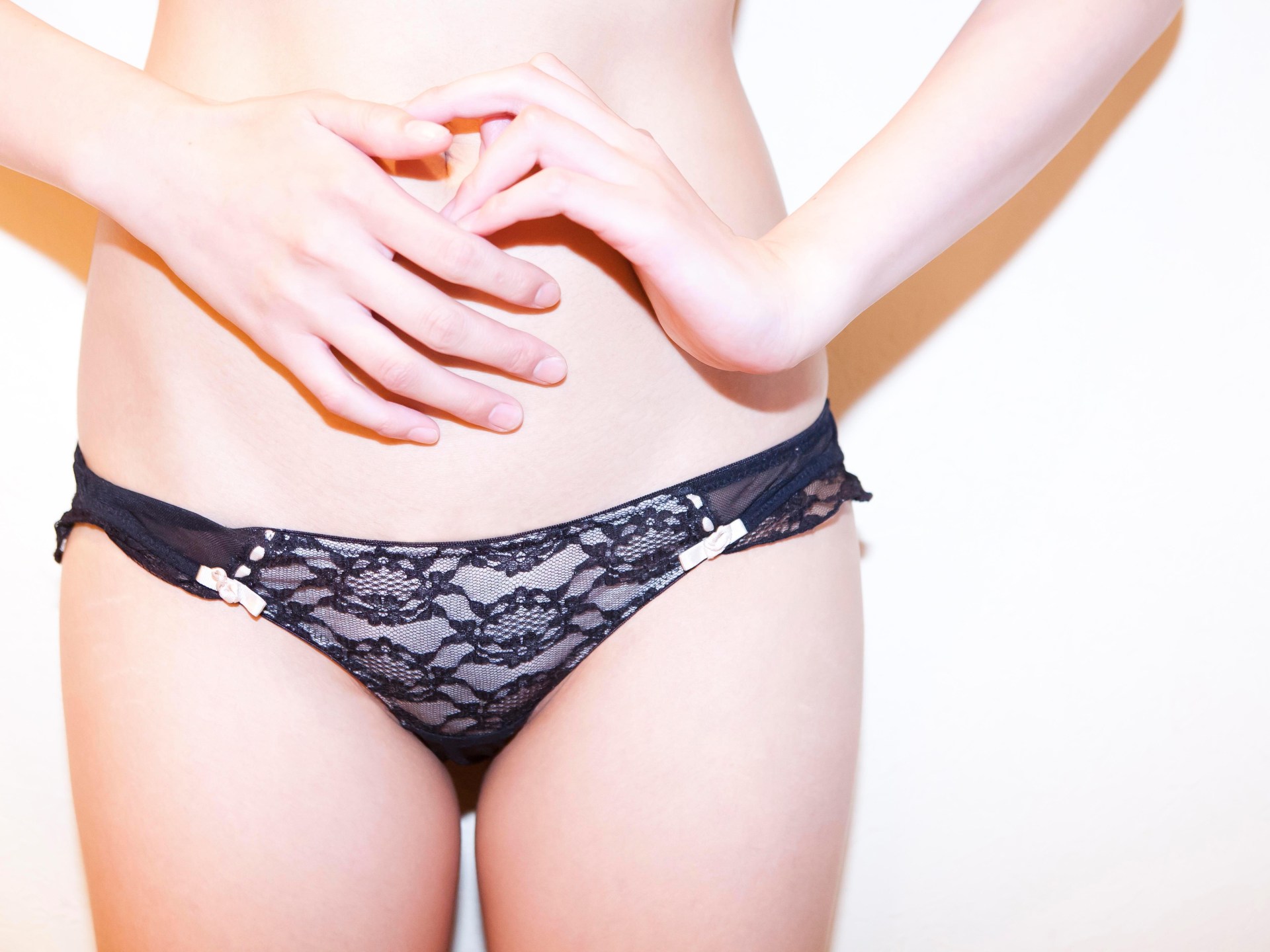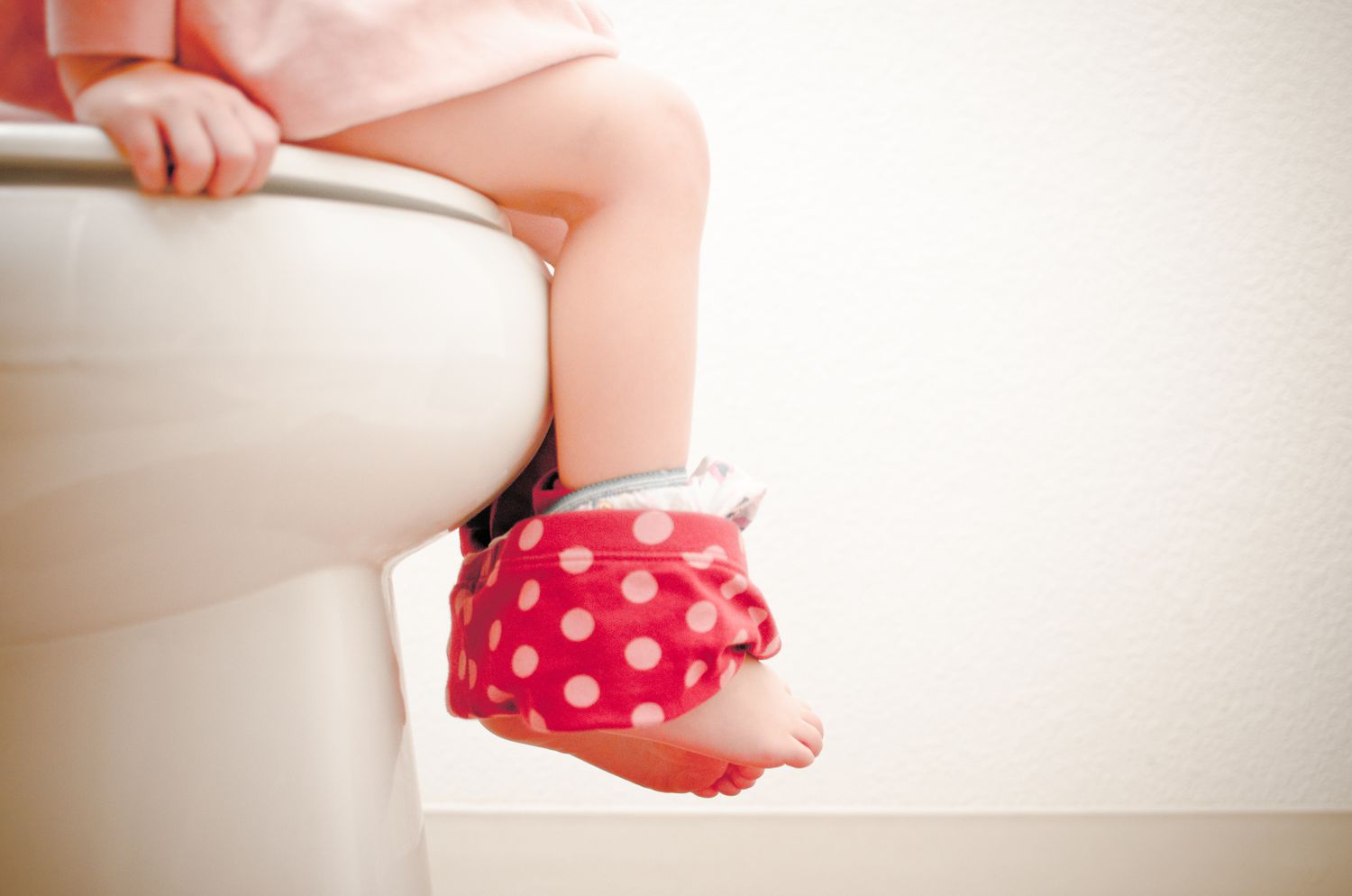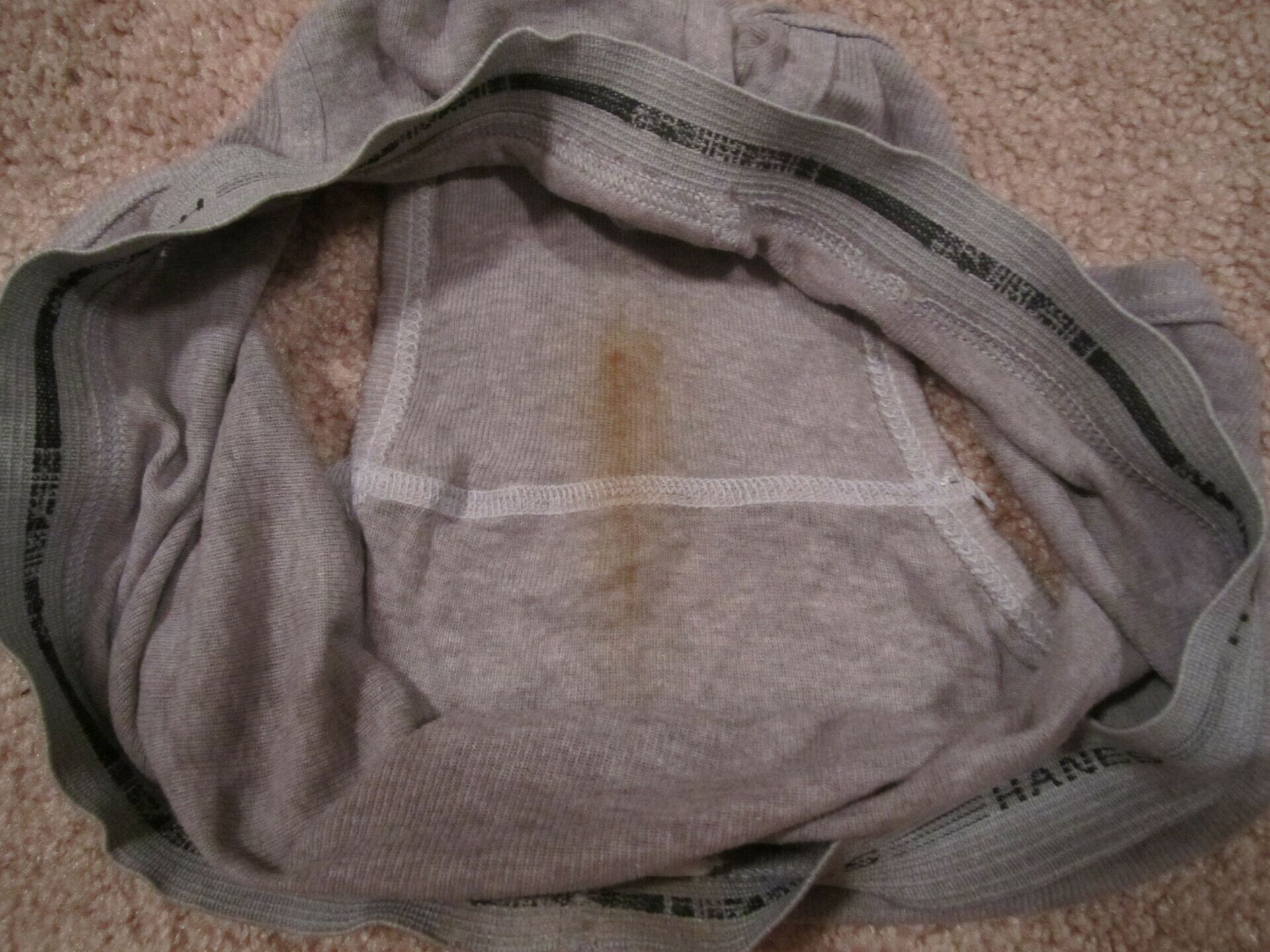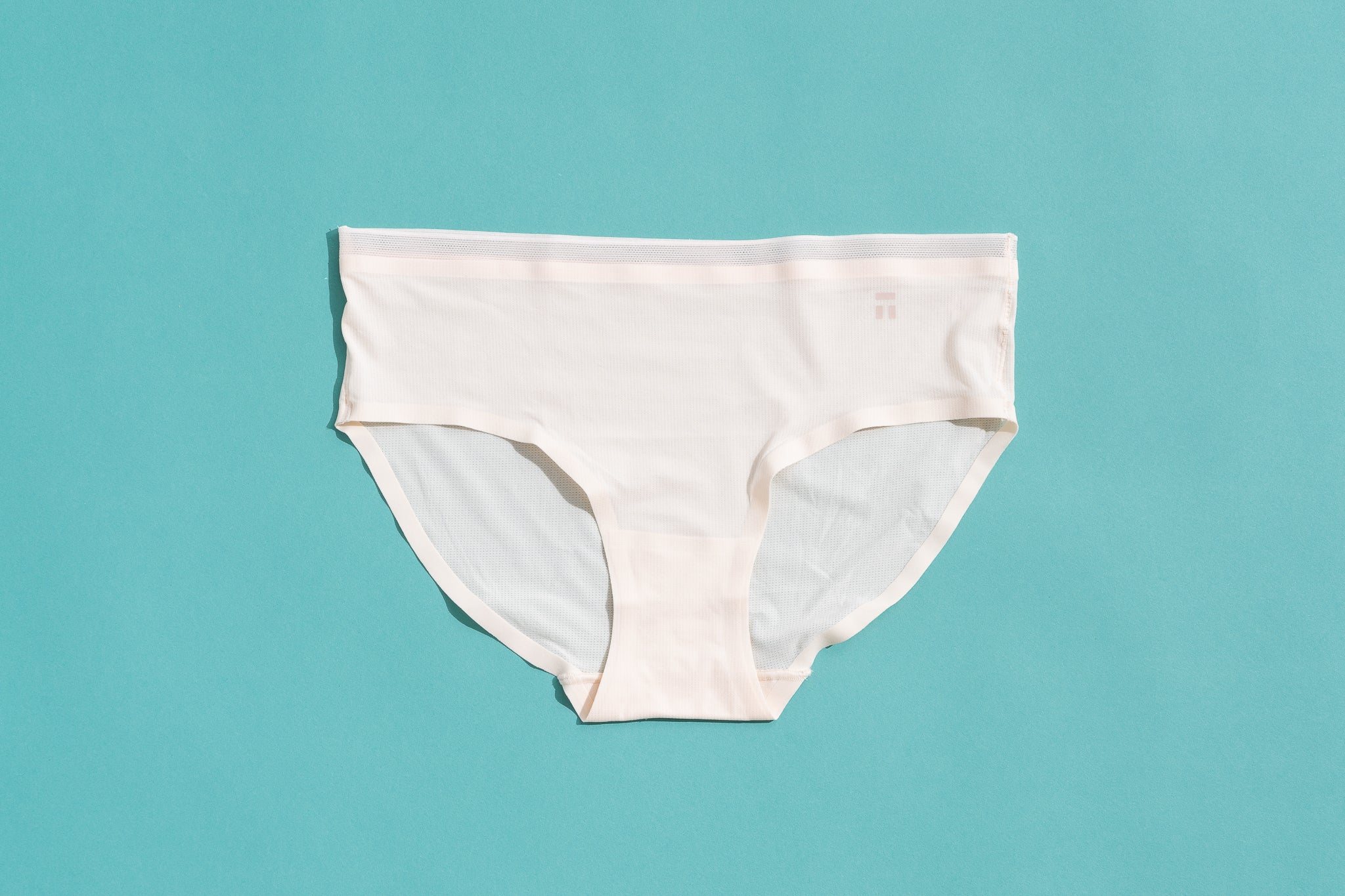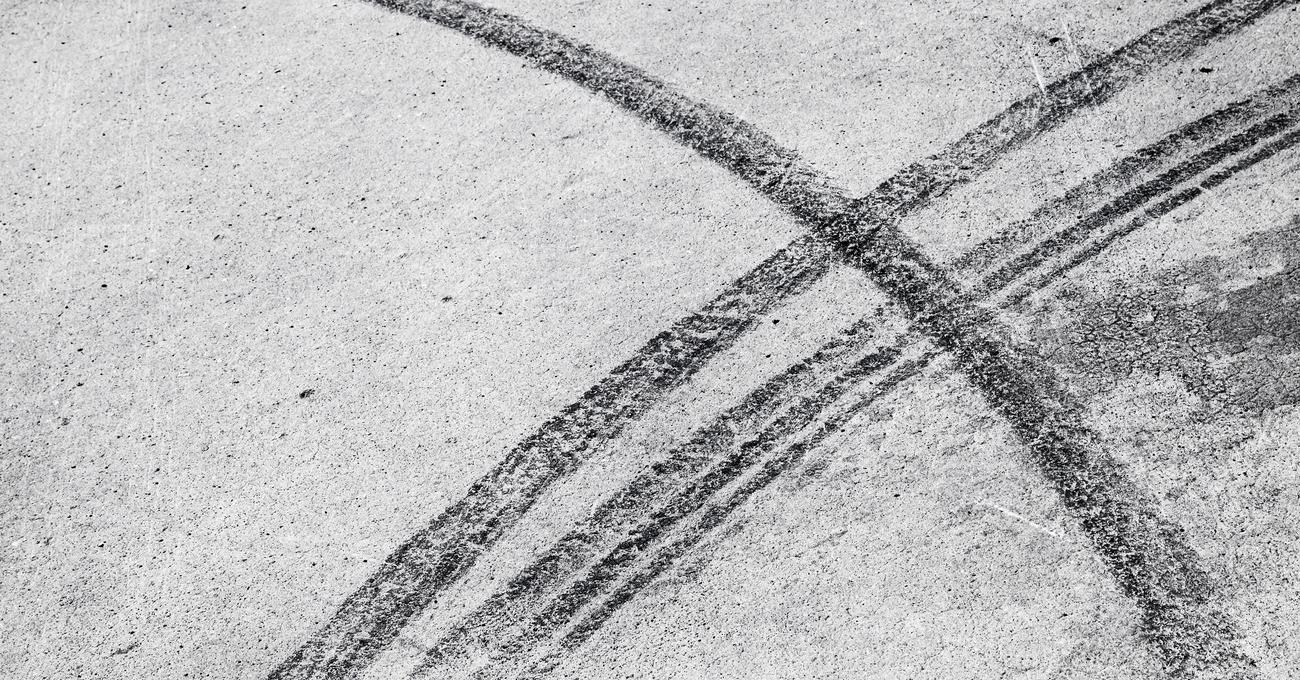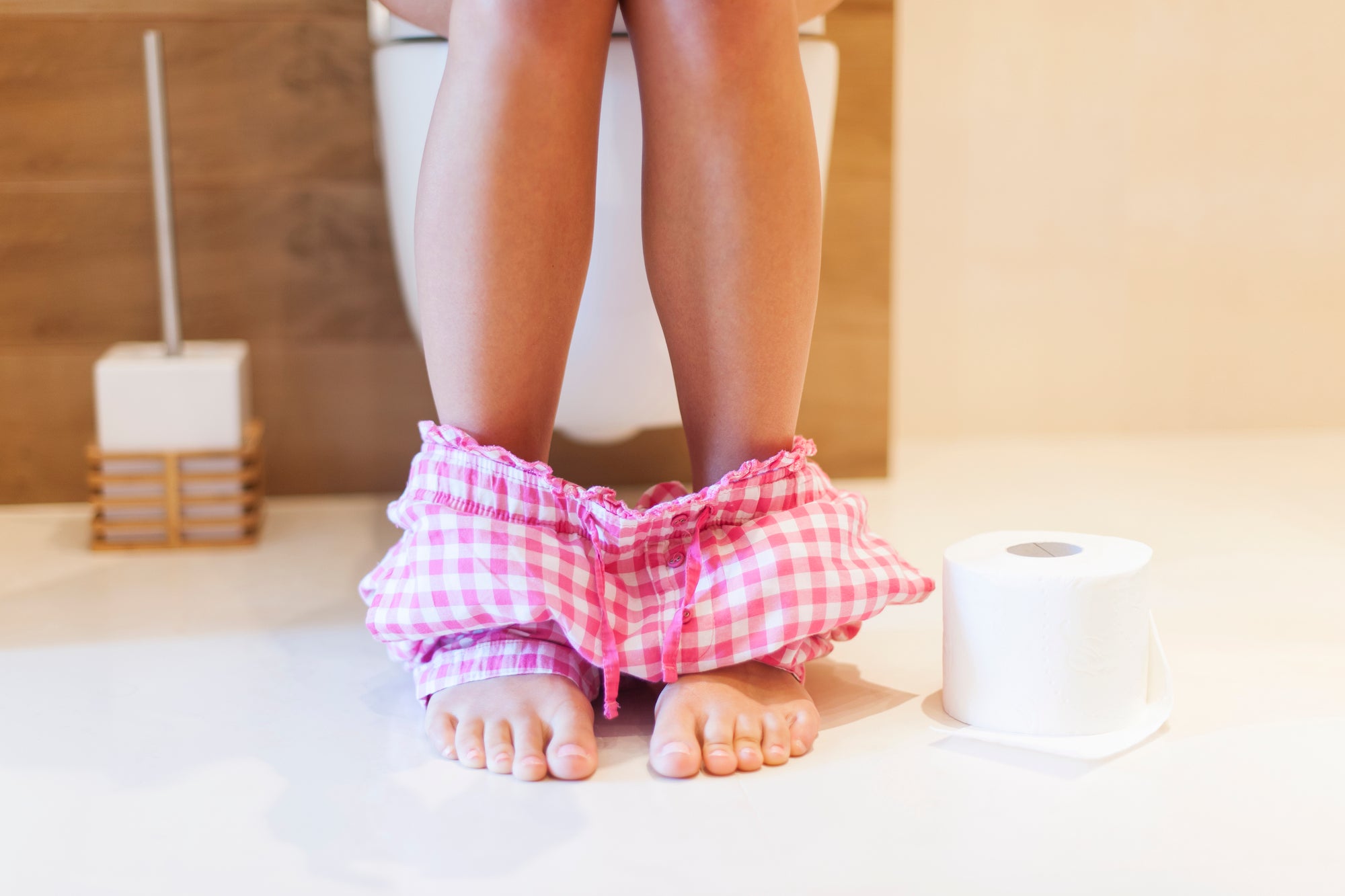

FAQs
Why Does My Poop Leave Skid Marks
Modified: August 24, 2023
Get answers to your general questions about why your poop leaves skid marks. Understand the causes and find solutions to improve your bowel movements.
(Many of the links in this article redirect to a specific reviewed product. Your purchase of these products through affiliate links helps to generate commission for Under-tec.com, at no extra cost. Learn more)
Table of Contents
Introduction
Skid marks in the toilet bowl after a bowel movement can be an embarrassing and puzzling issue. You may find yourself wondering why your poop leaves these unsightly streaks, and what you can do to prevent them. Rest assured, you are not alone in this experience. Many people encounter skid marks from time to time, and there are several factors that can contribute to their appearance.
In this article, we will explore the causes of skid marks and discuss potential remedies to help you tackle this issue. While skid marks may seem like a minor inconvenience, they can impact your confidence and hygiene. Understanding the underlying reasons for their occurrence can empower you to make lifestyle changes and find solutions that work for you.
It is important to note that skid marks, also known as streaks or residue, are different from other toilet bowl stains. They are typically thin lines or streaks left behind by fecal matter as it is flushed away. These marks can vary in color and thickness, depending on a variety of factors.
Now, let’s delve into the causes of skid marks and explore ways to prevent and manage this common issue.
Causes of Skid Marks
Skid marks in the toilet bowl can be caused by a combination of factors, including diet, digestion, hydration, and wiping technique. Let’s explore each of these causes in more detail:
- Diet and Digestion: The composition of your diet plays a significant role in the consistency and texture of your poop. Consuming low-fiber foods such as processed foods, dairy, and meat can lead to firmer stools that are more likely to leave skid marks when flushed.
- Lack of Fiber in the Diet: A diet lacking in fiber can contribute to constipation, which can result in thicker and harder-to-flush stools. Including fiber-rich foods like fruits, vegetables, whole grains, and legumes in your diet can help soften your stool and reduce the chances of skid marks.
- Dehydration: Inadequate hydration can lead to drier and harder stools, making them more likely to leave skid marks. It is essential to drink an adequate amount of water throughout the day to maintain proper hydration and facilitate smoother bowel movements.
- Rapid Transit Time: When your digestive system processes food too quickly, it can lead to loose or watery stools that may leave residue in the toilet bowl. Factors such as stress, certain medications, and gastrointestinal disorders can contribute to rapid transit time.
- Improper Wiping Technique: The way you wipe after a bowel movement can also contribute to skid marks. Insufficient wiping, improper angle, or using dry toilet paper can leave behind traces of stool in the toilet bowl. It is recommended to use moist wipes or consider a bidet for more efficient and thorough cleaning.
Understanding the causes of skid marks can help you identify the potential factors contributing to this issue. By addressing these causes through dietary changes, hydration, and proper wiping technique, you can significantly reduce the appearance of skid marks in the toilet bowl. Now, let’s move on to explore potential remedies for skid marks.
Diet and Digestion
The food we consume plays a crucial role in the consistency and texture of our stool. A diet that lacks fiber can be a common culprit behind the presence of skid marks in the toilet bowl. Understanding the connection between diet and digestion can help you make dietary changes to prevent skid marks.
When we consume low-fiber foods, such as processed foods, dairy, and meat, our stool tends to be firmer and more difficult to flush. This firmer stool is more likely to leave skid marks when it comes into contact with the toilet bowl. On the other hand, a diet rich in fiber promotes softer and bulkier stools that are easier to eliminate.
Incorporating fiber-rich foods into your diet can have a significant impact on your digestive health and reduce the occurrence of skid marks. Fruits and vegetables, such as berries, apples, broccoli, and carrots, are excellent sources of dietary fiber. Whole grains, like oats, quinoa, and brown rice, are also high in fiber.
Additionally, legumes such as lentils, beans, and chickpeas provide a good amount of fiber. These fiber-rich foods help add bulk to your stool and promote regular bowel movements. Aim to include a variety of these foods in your diet to ensure you are getting an adequate amount of fiber.
It is important to note that when increasing your fiber intake, it is advisable to do so gradually and drink plenty of water. A sudden and dramatic increase in fiber intake can lead to digestive discomfort, such as gas and bloating. By gradually incorporating fiber-rich foods into your meals and staying hydrated, you can help your body adjust to the increased fiber intake more easily.
In addition to increasing fiber intake, it is also beneficial to avoid foods that can contribute to constipation and firmer stools. Processed foods, fried foods, and foods high in fat are more likely to lead to harder-to-flush stools. Limiting the consumption of these foods can help prevent skid marks.
By paying attention to your diet and making appropriate changes to include more fiber-rich foods, you can improve your digestion and reduce the likelihood of skid marks in the toilet bowl. The next section will discuss another crucial factor that can contribute to the presence of skid marks – dehydration.
Lack of Fiber in the Diet
A lack of fiber in the diet is a common cause of skid marks in the toilet bowl. Fiber plays a crucial role in maintaining a healthy digestive system and promoting regular bowel movements. When our diet lacks sufficient fiber, it can lead to firmer and harder-to-flush stools, increasing the likelihood of skid marks.
Fiber is classified into two types: soluble fiber and insoluble fiber. Soluble fiber dissolves in water and forms a gel-like substance in the intestines, helping to soften the stool. Insoluble fiber adds bulk to the stool, aiding its movement through the digestive tract. Both types of fiber are important for maintaining healthy bowel movements.
Many processed and refined foods, such as white bread, white rice, and sugary snacks, are low in fiber. If your diet primarily consists of these types of foods, you may be missing out on essential fiber. It is important to incorporate more fiber-rich foods into your daily meals to improve your digestion and reduce the occurrence of skid marks.
Fiber-rich foods include fruits, vegetables, whole grains, legumes, and nuts. Berries, apples, broccoli, carrots, oats, quinoa, brown rice, lentils, beans, and almonds are all excellent sources of fiber. Including a variety of these foods in your diet will ensure that you are getting an adequate amount of fiber to support healthy bowel movements.
When increasing your fiber intake, it is crucial to do so gradually and drink plenty of water. Rapidly increasing your fiber intake without sufficient hydration can lead to constipation and discomfort. Fiber absorbs water, so it is important to maintain proper hydration to soften the stool and facilitate its movement through the intestines.
In addition to consuming more fiber-rich foods, you may also consider taking a fiber supplement. Psyllium husk, for example, is a popular fiber supplement that can be mixed with water or added to foods. It can help increase your overall fiber intake and promote regular bowel movements.
By addressing the lack of fiber in your diet and incorporating more fiber-rich foods, you can improve your digestion, soften your stool, and reduce the presence of skid marks in the toilet bowl. However, it is important to note that if you have persistent digestive issues or concerns, it is always best to consult with a healthcare professional for personalized advice and guidance.
Dehydration
Dehydration can be a significant factor contributing to the presence of skid marks in the toilet bowl. When we are dehydrated, our bodies do not have enough water to adequately soften the stool, resulting in harder and dryer bowel movements.
Proper hydration is essential for maintaining a healthy digestive system and promoting regular bowel movements. When we are well-hydrated, water is absorbed by the colon, leading to softer and easier-to-pass stools. Inadequate hydration, on the other hand, can lead to drier and harder stools, increasing the likelihood of skid marks.
To ensure adequate hydration, it is recommended to drink at least eight glasses (64 ounces) of water per day. However, individual hydration needs may vary depending on factors such as physical activity, climate, and overall health. Pay attention to your body’s signals of thirst and aim to drink water throughout the day to stay properly hydrated.
In addition to water, you can also increase your fluid intake through other hydrating beverages such as herbal tea, infused water, and low-sugar fruit juices. Consuming foods with high water content, such as watermelon, cucumbers, and soups, can also contribute to your overall hydration levels.
It is important to note that certain factors, such as illness, medication, or excessive sweating, can increase the body’s demand for water. During these times, it may be necessary to increase your fluid intake to compensate for any additional losses.
Furthermore, it is important to keep in mind that beverages containing caffeine and alcohol have diuretic properties, which can increase urine production and potentially contribute to dehydration. While it is not necessary to completely avoid these beverages, moderation and ensuring adequate water intake is key.
By staying well-hydrated, you can help soften your stools and reduce the chances of skid marks in the toilet bowl. Remember to listen to your body’s thirst signals, drink enough fluids, and incorporate hydrating foods into your diet to maintain optimal hydration levels.
Rapid Transit Time
Rapid transit time is another factor that can contribute to the presence of skid marks in the toilet bowl. Transit time refers to the duration it takes for food to travel through the digestive system. When the transit time is too fast, it can result in loose or watery stools that may leave residue in the toilet.
Several factors can contribute to rapid transit time, including stress, certain medications, and gastrointestinal disorders. Stress can affect the function of the digestive system, leading to faster movement of food through the intestines. Certain medications, such as laxatives or antibiotics, can also alter the transit time and potentially result in loose stools.
Medical conditions like irritable bowel syndrome (IBS), inflammatory bowel disease (IBD), and celiac disease can cause rapid transit time and lead to loose stools. If you suspect that a medical condition may be the underlying cause of your rapid transit time, it is recommended to consult with a healthcare professional for a proper diagnosis and appropriate treatment.
In some cases, rapid transit time may be temporary and related to dietary factors. Consuming foods that have laxative properties, such as prunes, kiwi, and certain spices, can prompt quicker movement of stool through the digestive system. It is important to be mindful of these foods and their effects on your bowel movements.
Addressing rapid transit time usually involves identifying and managing the underlying cause. If stress is a contributing factor, stress management techniques such as exercise, relaxation exercises, and seeking support from loved ones can be beneficial. It is also important to follow any medication regimens as prescribed by your healthcare professional.
If you suspect that certain foods or dietary factors are contributing to your rapid transit time, it may be helpful to keep a food diary to track your symptoms. By identifying potential triggers, you can make informed decisions about your diet and potentially reduce the occurrence of loose stools and skid marks.
Ultimately, managing rapid transit time requires understanding the underlying causes and making necessary lifestyle changes or seeking appropriate medical treatment. Addressing this factor can help improve your bowel movements and reduce the appearance of skid marks in the toilet bowl.
Improper Wiping Technique
Believe it or not, improper wiping technique can contribute to the presence of skid marks in the toilet bowl. Inadequate wiping, improper angle, or using dry toilet paper can leave behind traces of stool, resulting in skid marks.
One common mistake people make is not wiping thoroughly enough. In some cases, this may be due to a rush or lack of attention to hygiene. It is important to take the time to ensure proper cleaning after a bowel movement. This may involve multiple wipes until there is no residue left on the toilet paper.
The angle at which you wipe is also crucial. Wiping from back to front can cause bacteria from the anal area to come into contact with the urethra or vagina, increasing the risk of urinary tract infections (UTIs) in women. It is recommended to wipe from front to back to maintain proper hygiene and reduce the chances of introducing bacteria into sensitive areas.
Using dry toilet paper alone may not be sufficient for effective cleaning. Dry paper can leave traces of stool behind, especially if the stool is soft or sticky. Consider incorporating moist wipes or flushable wipes into your cleaning routine for a more thorough and hygienic wipe. These wipes are designed to effectively remove residue and can contribute to a cleaner finish.
Another option to consider is a bidet, which uses water to clean the anal area after a bowel movement. Bidets are commonly used in many parts of the world and are known for their effectiveness in maintaining proper hygiene. They can be installed as a separate fixture or as a bidet attachment to your existing toilet.
Proper wiping technique, including thorough cleaning, the right wiping angle, and the use of moist wipes or bidets, can significantly reduce the chances of skid marks in the toilet bowl. By paying attention to hygiene and adopting effective wiping practices, you can promote cleanliness and prevent residue from being left behind.
Remember, proper wiping technique is just one aspect of maintaining good hygiene. It is also essential to follow a healthy diet, stay hydrated, and address any underlying digestive or medical conditions that may contribute to the presence of skid marks. Now, let’s explore potential remedies to further address this issue.
Medical Conditions
While skid marks in the toilet bowl can often be attributed to lifestyle and hygiene factors, there are instances where underlying medical conditions may contribute to this issue. It is important to consider and address these conditions to effectively manage skid marks.
Irritable Bowel Syndrome (IBS): IBS is a common gastrointestinal disorder characterized by symptoms such as abdominal pain, bloating, and changes in bowel habits. Individuals with IBS may experience rapid transit time, leading to loose stools and the potential for skid marks. Managing IBS involves identifying trigger foods, managing stress, and sometimes medication prescribed by a healthcare professional.
Inflammatory Bowel Disease (IBD): IBD encompasses conditions like Crohn’s disease and ulcerative colitis, which cause inflammation and damage in the digestive tract. These conditions can result in diarrhea, which can lead to skid marks. Treatment for IBD typically involves a combination of medication, lifestyle changes, and sometimes surgery to manage symptoms and reduce inflammation.
Celiac Disease: Celiac disease is an autoimmune disorder in which the consumption of gluten triggers an immune response that damages the small intestine. Loose stools and diarrhea are common symptoms of celiac disease, which can contribute to the presence of skid marks. The primary treatment for celiac disease is strict adherence to a gluten-free diet.
Gastrointestinal Infections: Certain bacterial, viral, or parasitic infections of the gastrointestinal tract can cause diarrhea, resulting in skid marks. These infections are often temporary and can be managed through rest, hydration, and sometimes medication prescribed by a healthcare professional.
If you suspect that a medical condition may be contributing to your skid marks, it is important to consult with a healthcare professional for an accurate diagnosis and appropriate treatment. They can conduct the necessary tests, provide guidance on managing symptoms, and prescribe medication if needed.
It is worth noting that managing skid marks caused by medical conditions often involves a comprehensive approach. This may include dietary modifications, stress management techniques, medication, and regular monitoring under the guidance of a healthcare professional.
By addressing any potential underlying medical conditions, you can work towards effectively managing skid marks and maintaining better overall digestive health. Now, let’s explore potential remedies that can help reduce the appearance of skid marks in the toilet bowl.
Remedies for Skid Marks
Dealing with skid marks in the toilet bowl can be frustrating, but there are several remedies and lifestyle changes you can implement to help reduce their occurrence. Here are some effective remedies for managing skid marks:
- Increased fiber intake: Incorporating more fiber-rich foods into your diet can help soften your stool and promote regular bowel movements. Aim to include fruits, vegetables, whole grains, legumes, and nuts in your meals to ensure an adequate fiber intake.
- Adequate hydration: Drinking enough water throughout the day is essential for maintaining proper hydration and ensuring softer bowel movements. Aim to drink at least eight glasses of water per day, and consider hydrating beverages and foods with high water content.
- Proper wiping technique: Taking the time for thorough cleaning after a bowel movement and using the right wiping technique can help ensure no residue is left behind. Consider using moist wipes or a bidet to enhance cleanliness and eliminate the chance of skid marks.
- Medications and supplements: In some cases, your healthcare professional may recommend certain medications or supplements to help manage underlying digestive conditions causing skid marks. Follow their guidance and take any prescribed medications or supplements as directed.
- Managing stress: Stress can impact bowel movements and contribute to skid marks. Implement stress management techniques such as exercise, deep breathing exercises, meditation, or engaging in hobbies to help reduce stress levels and promote healthy bowel movements.
It is important to remember that the effectiveness of these remedies may vary depending on the underlying causes of skid marks. It may take time and experimentation to find the combination of remedies that works best for you.
If you have implemented these remedies and are still experiencing persistent skid marks or have concerns about your bowel movements, it is recommended to consult with a healthcare professional. They can provide further guidance, conduct tests if necessary, and offer personalized recommendations based on your specific situation.
Remember, skid marks may sometimes be a normal occurrence, but if they persist or are accompanied by other worrisome symptoms, it is important to seek medical attention. Regular check-ups and open communication with your healthcare professional are key to maintaining optimal digestive health.
By adopting these remedies and making necessary lifestyle changes, you can work towards reducing the appearance of skid marks and promoting better overall digestive health.
Increased Fiber Intake
Incorporating more fiber into your diet can have a significant impact on reducing the occurrence of skid marks in the toilet bowl. Fiber plays a crucial role in maintaining healthy digestion and promoting regular bowel movements.
Fiber can be broadly categorized into two types: soluble fiber and insoluble fiber. Soluble fiber dissolves in water and forms a gel-like substance in the digestive system, helping to soften the stool. Insoluble fiber adds bulk to the stool, aiding its movement through the intestines. Both types of fiber are important for maintaining bowel regularity.
There are various ways to increase your fiber intake. Fruits and vegetables, particularly those with edible skins or peels, are excellent sources of fiber. Berries, apples, pears, broccoli, carrots, and leafy greens like spinach and kale are all fiber-rich options to consider incorporating into your meals.
Whole grains, such as oats, quinoa, brown rice, and whole wheat bread and pasta, are also high in fiber. Switching from refined grains to whole grains is an effective way to boost your fiber intake. Additionally, including legumes such as lentils, beans, and chickpeas in your diet can provide a good amount of fiber.
When increasing your fiber intake, it is essential to do so gradually and drink plenty of water. Sudden and drastic increases in fiber intake can lead to digestive discomfort, such as bloating and gas. By gradually adding more fiber-rich foods to your diet and staying properly hydrated, you can help your body adjust to the increased fiber consumption.
It is worth noting that fiber supplements are also available, such as psyllium husk or wheat bran. These supplements can provide an additional source of fiber if it is challenging to obtain adequate amounts solely from food sources. However, it is best to consult with a healthcare professional before beginning any new supplements.
Increasing your fiber intake can have numerous benefits beyond just reducing skid marks. Fiber helps promote a feeling of fullness, aids in weight management, and supports overall digestive health. It can also help prevent constipation and reduce the risk of chronic diseases, such as heart disease and certain types of cancer.
Remember, everyone’s fiber needs may vary, so it is important to listen to your body and find the amount that works best for you. By incorporating more fiber-rich foods into your diet, you can improve your digestion and reduce the likelihood of skid marks in the toilet bowl.
Adequate Hydration
Adequate hydration is crucial for maintaining proper digestive health and reducing the occurrence of skid marks in the toilet bowl. When we are dehydrated, it can lead to drier and harder stools, making them more likely to leave behind residue.
Drinking enough water throughout the day is essential for staying hydrated. The general recommendation is to consume at least eight glasses, or 64 ounces, of water per day. However, individual hydration needs may vary depending on factors such as physical activity, climate, and overall health.
It is important to listen to your body’s thirst signals and drink water regularly to maintain optimal hydration. In addition to water, you can also increase your fluid intake through other hydrating beverages such as herbal tea, infused water, and low-sugar fruit juices. Consuming foods with high water content, such as watermelon, cucumbers, and soups, can also contribute to your overall hydration levels.
It is worth noting that certain factors can increase your body’s demand for water. During times of illness, such as fever, vomiting, or diarrhea, your body may lose more fluids and require increased hydration. Similarly, if you engage in intense physical activity or spend time in hot weather, you need to replenish fluids more frequently.
On the other hand, beverages containing caffeine and alcohol have diuretic properties, which can increase urine production and potentially contribute to dehydration. While it is not necessary to completely avoid these beverages, it is important to consume them in moderation and ensure that you also drink sufficient water.
To monitor your hydration levels, pay attention to the color of your urine. Pale yellow or clear urine indicates good hydration, while dark yellow or amber-colored urine may be a sign of dehydration.
Proper hydration not only supports healthy digestion but also has numerous other benefits for overall well-being. It helps regulate body temperature, cushion joints, deliver nutrients to cells, and maintain healthy skin.
By staying well-hydrated, you can help soften your stools and reduce the chances of skid marks in the toilet bowl. Remember to drink enough fluids throughout the day, listen to your body’s thirst signals, and incorporate hydrating foods and beverages into your diet to maintain optimal hydration levels.
Proper Wiping Technique
Proper wiping technique is essential for maintaining good hygiene and reducing the presence of skid marks in the toilet bowl. Inadequate wiping, improper angle, or using dry toilet paper can leave behind traces of stool, contributing to skid marks.
One common mistake people make is not wiping thoroughly enough. This may be due to rushing or a lack of attention to hygiene. To ensure proper cleaning after a bowel movement, it is important to take the time to wipe thoroughly. This may involve multiple wipes until there is no residue left on the toilet paper.
The angle at which you wipe is also crucial. Wiping from back to front can cause bacteria from the anal area to come into contact with the urethra or vagina, increasing the risk of urinary tract infections (UTIs) in women. To maintain proper hygiene and reduce the chances of introducing bacteria into sensitive areas, it is recommended to wipe from front to back.
Dry toilet paper alone may not be sufficient for effective cleaning. Dry paper can leave traces of stool behind, especially if the stool is soft or sticky. To enhance cleanliness and eliminate the chance of skid marks, consider using moist wipes or flushable wipes for a more thorough wipe. These wipes are designed to effectively remove residue and can contribute to a cleaner finish.
Another option to consider is the use of a bidet. A bidet uses water to clean the anal area after a bowel movement. Bidets are commonly used in many parts of the world and are known for their effectiveness in maintaining proper hygiene. They can be installed as a separate fixture or as a bidet attachment to your existing toilet.
It is important to note that excessive wiping can lead to irritation and damage to the delicate skin in the anal area. If you experience discomfort or irritation, it is advisable to use gentle, patting motions rather than vigorous wiping. Additionally, using mild, unscented soaps or cleansing products specifically designed for the anal area can help maintain cleanliness and reduce the risk of irritation.
By practicing proper wiping technique, including thorough cleaning, the correct wiping angle, and the use of moist wipes or bidets, you can significantly reduce the chances of skid marks in the toilet bowl. Taking these steps to ensure hygiene and cleanliness will contribute to a more pleasant and confident bathroom experience.
Medications and Supplements
In some cases, managing skid marks may involve the use of medications or supplements to address underlying digestive issues. These treatments can help alleviate symptoms and reduce the occurrence of skid marks.
If you are experiencing chronic digestive problems that contribute to skid marks, it is recommended to consult with a healthcare professional who can assess your condition and prescribe appropriate medications. Medications such as stool softeners, bulking agents, or prescription-strength laxatives may be prescribed to regulate bowel movements and reduce the likelihood of skid marks.
Additionally, your healthcare professional may recommend the use of supplements to support digestive health and reduce skid marks. Supplements such as psyllium husk or wheat bran can provide additional fiber to your diet, promoting softer stools and regular bowel movements. It is important to follow the recommended dosage and guidelines provided by your healthcare professional or the product packaging.
When considering any medications or supplements, it is crucial to consult with a healthcare professional to ensure they are safe and appropriate for your specific situation. They can evaluate your medical history, medications you may currently be taking, and potential interactions to determine the most suitable treatment plan.
Moreover, it is important to remember that medications and supplements should not be relied upon as the sole solution. They should be used in conjunction with other lifestyle modifications, such as proper hydration, increased fiber intake, and maintaining good hygiene practices. These collective efforts will provide a comprehensive approach to managing skid marks and promoting overall digestive health.
It is worth noting that everyone’s response to medications and supplements may vary, and it may take time to find the right combination and dosage that works best for you. It is important to communicate openly with your healthcare professional, report any changes or concerns, and follow their guidance throughout the treatment process.
Remember, medications and supplements should be used under the supervision and guidance of a healthcare professional to ensure safe and effective management of skid marks and any underlying digestive issues.
Conclusion
Skid marks in the toilet bowl can be an embarrassing and frustrating issue, but they can often be managed by understanding the underlying causes and implementing effective remedies. Factors such as diet and digestion, lack of fiber, dehydration, rapid transit time, improper wiping technique, and certain medical conditions can contribute to the presence of skid marks.
Increasing fiber intake through a diet rich in fruits, vegetables, whole grains, legumes, and nuts can promote softer stools and regular bowel movements, reducing the likelihood of skid marks. Adequate hydration is essential for maintaining proper digestion, and it is important to drink enough water throughout the day to keep stools well-hydrated and easier to pass.
Implementing proper wiping technique, including thorough cleaning, the correct angle, and the use of moist wipes or bidets, can enhance cleanliness and reduce residue left behind. Addressing any underlying medical conditions through consultation with a healthcare professional is also crucial to managing skid marks effectively.
It is important to note that managing skid marks may require a combination of lifestyle changes, such as diet, hydration, hygiene practices, stress management, and, in some cases, the use of medications or supplements prescribed by a healthcare professional.
By being mindful of these factors, making appropriate changes, and seeking professional guidance if needed, you can work towards reducing the occurrence of skid marks and improving your overall digestive health.
Remember, everyone’s experience with skid marks may differ, and it may take time to find the strategies that work best for you. Stay patient, persistent, and adaptable in your approach, and prioritize open communication with your healthcare professional to ensure personalized and effective management of skid marks.
